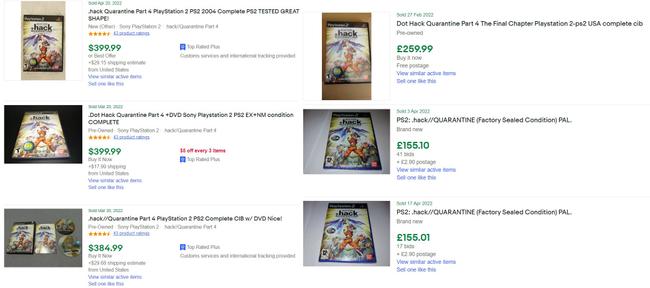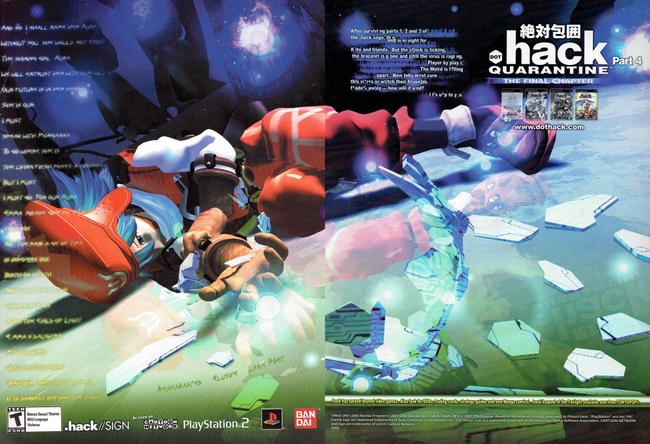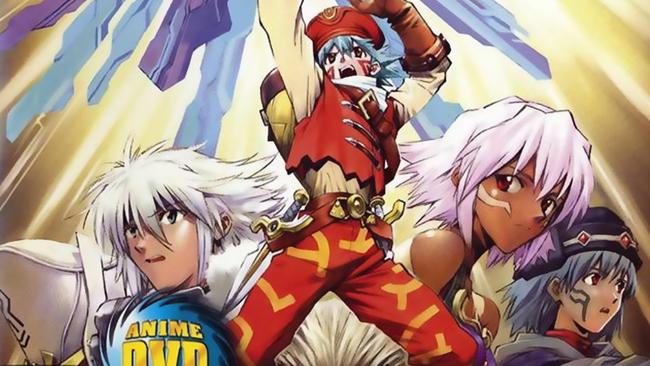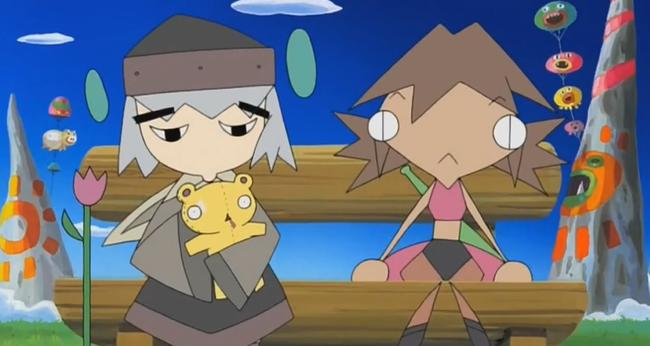Why is .hack//Quarantine so much more expensive than the rest of the .hack games?
You wouldn’t find as many video games at the center of a 3-circle Venn diagram with sections for “old”, “rare”, and “worth a lot of money” as you may think. But one such game is the US and (to an only slightly lesser extent) European releases of .hack//Quarantine, a somewhat well-known action JRPG on the PS2 that originally came out in 2003 in Japan, followed by a US and EU release in 2004.
It's the final entry in the first .hack tetralogy (often referred to simply as the IMOQ series since it’s one large game spread across 4 separate disks which are called .hack//Infection, .hack//Mutation, .hack//Outbreak, and .hack//Quarantine.) Oddly enough, it’s also by far the most expensive game in the series. In fact, Quarantine alone typically costs more than twice the cost of the other 3 combined.
When looking at lists of the rarest and/or expensive PS2 games in North America, it’s not unusual to find out that there was a specific (and often unique) catalyst that paved the way for the game to become so sought after. For example, Rule of Rose caused a moral panic in Europe that ultimately resulted in its getting banned from the UK. Shadow Hearts was massively overshadowed by the highly anticipated, heavily marketed release of another turn-based JRPG that happened to come out only a week after it - Final Fantasy X. Silent Hill Shattered Memories was a PS2 port of a Wii game that came out toward the end of the PS2’s lifespan, making it an instantly unusual release. But things aren’t quite so clear when it comes to .hack//Quarantine, with which an explanation about its luxury-grade price tag, especially relative to other .hack games, isn’t so readily available.

At the time of writing this, .hack//Infection and Mutation can usually be bought for $10 to $40. Outbreak’s price has inched up over the years, and nowadays can usually be bought for anywhere between $50 and 90. There was a time when the .hack//G.U. games were getting pretty expensive, usually between $50–70 for each of the 3 games. However, the release of a collection/port in 2017, .hack//G.U. Last Recode, has drastically lowered their prices, preventing them from spiraling out of control like the still unported Quarantine’s.
So this all begs the question: Why is .hack//Quarantine, specifically, so much more expensive than the rest of the .hack games?
This is a question that .hack fans, game collectors, and confused onlookers alike have been puzzling over for a little over a decade. But like many other things in life, the key to understanding why .hack//Quarantine's rocketing price lies in understanding its history. Specifically, since this is a phenomenon that relates to its US and European releases, we’ll just be walking through those (in stark contrast to the English language editions, the original Japanese version of Quarantine is generally pretty affordable).
Upon its English-language debut in 2003, the .hack franchise was something of a novelty; Animerica would call it a “multimedia extravaganza” but onlookers probably would’ve been more prone to simply calling it “a lot.” Within just one year, between February of 2003 and 2004, the .hack//Sign anime aired on Toonami, and a slew of other products was released, including all 4 of the IMOQ games, a trading card game called .hack//Enemy, and two out of the three volumes of the .hack//Legend of the Twilight manga. On top of all of this, there was plenty of miscellaneous merchandise (especially for .hack//Sign). And as if all that wasn’t enough for a while, just on the horizon were the DVD release of the .hack//Legend of the Twilight anime and a few other .hack manga and light novel series. And even though .hack//Sign and the IMOQ games were meant to be the bread and butter of the franchise, potential fans could hardly be blamed for feeling overwhelmed with so much releasing in so little time. Indeed, this constant influx of new content, this “multimedia extravaganza”, did a lot to expand the universe (and fandom) of .hack, but not everyone was happy about it.

The four-discs-that-are-one-game release of the IMOQ games is probably the number 1 thing that prevented .hack from getting more popular than it did. More specifically, the issue wasn’t that the entire game was divided among 4 discs (Final Fantasy VII, after all, took up 4 discs). Rather, it was that each disc had to be purchased individually, that they each cost a full retail price of $50 (though there are a few archived retail sites that had them listed between $20-$40 at times), and that they would be released separately and over the course of 11 months. Many players who bit the bullet and bought the games despite this hoped that the excessive amount of money that they were sinking into the series would feel justified by a marked improvement in gameplay or graphics between each disc, but to their collective disappointment, Mutation made it perfectly obvious that there wouldn’t be any. For better or for worse, IMOQ truly felt like one cohesive game that was divided between 4 discs.
But despite everything, IMOQ had a decently successful western release. Its story and concept were widely praised, but its piecemeal release left even the most excited players feeling frustrated and exhausted. This is no doubt why at the end of this long, expensive journey, Quarantine became a sort of punching bag for players to take out their frustrations with the series. And while Quarantine’s reviews were rarely downright bad, they were also rarely higher than those of its predecessors, especially Infection. Nonetheless, Quarantine was the all-important ending of the quadrilogy. Anyone who wanted to see the story through to the end, whether it was because they were so enthusiastic about it or had a case of sunk-cost fallacy, couldn’t exactly skip it and hope for the best.
Despite their necessity to the series, it wouldn’t be until the late 2000s that .hack fans new and old would start to notice that Outbreak and Quarantine were a little trickier to get a hold of than the previous 2 games in the series. Surviving forum posts from as early as 2006 show disgruntled fans complaining about having a hard time finding them, Quarantine in particular. Posts like these would start to become more common within the next year, as the successful release of a new set of .hack games, .hack//G.U. (which were released in the US between October 2006–September 2007), renewed a lot of interest in the IMOQ series. And while it was a somewhat common experience among early .hack fans to have particular issues tracking down any specific one of the 4 games in the series, it became very clear early on that even so, Outbreak and Quarantine (but especially Quarantine) were particularly elusive.
By the early 2010s, posts of .hack fans complaining about either having to go to game stores in other cities or having to pay more for Quarantine than they did for other .hack games were becoming a regular enough occurrence that the idea that it was a rare game that a lot of .hack fans wanted had solidified. Uncoincidentally, this is also when - according to PriceCharting - its price began to noticeably rise while the prices of the other IMOQ games stayed within the $20–40 range. The only other .hack games going up in price were the much more recent G.U. games, volume 1 in particular, were already commanding $50–70 price tags despite their comparative newness. Whether this was the result of too much demand and not enough supply, superficial inflation caused by resellers who noticed how much .hack fans were willing to pay for Quarantine, a mix of both of them, or something else entirely, isn’t clear. Nonetheless, Quarantine not only stayed rare and expensive even as the G.U. series took centerstage, but started becoming a recurring entry in lists of expensive PS2 games. Both the game collecting and reselling scenes at large were finally starting to notice what .hack fans had known for years: There were people who really, really wanted this game, and they were willing to pay for it.

With Quarantine’s newfound status came not only collector intrigue, but curiosity. Why was this game, specifically, so much more expensive than the rest of the games in the series? What happened to it? People began seeking answers that weren’t as obvious and/or readily available the way it usually is for other games that fetched similarly high price tags. It’s hardly a shock, therefore, that around this time, rumors and half-baked theories trying to rationalize Quarantine’s price tag began to circulate.
Unsurprisingly, many of these suppositions were short-lived and/or sounded like someone sourced them from their uncle who works for Nintendo Bandai. One particularly ridiculous example is the idea that several Digimon fans hoarded copies of Quarantine for their own collections because there were Digimon voice actors in it (yes, really). Nonetheless, there is one rumor about what caused Quarantine’s price to skyrocket that’s managed to linger even through 2022: That the DVD that came with Quarantine (which contained the final episode of the .hack//Liminality anime and a short called .hack//Gift) had some nudity, and at some point (shortly after Quarantine’s release, presumably), someone (perhaps Sony, the ESRB, and/or the retailers themselves) pulled it from the shelves in an attempt to avoid issues and/or controversy for the T-rated game.
It’s easy to see why this rumor has stuck around as long as it has. It not only sounds true at a proverbial glance, but there’s also evidence that sits comfortably in its corner. Right off the bat, there is some nudity in Gift which fans have been pointing out since 2004. More specifically, there are two moments, and they both happen toward the end of the short; one in the episode itself, one in the end credits. The first instance - the one in the episode itself - is drawn in the extremely simplified, comedic way that the rest of the episode is done in, while the other appears as an image in the end credits and in the typical style of .hack//Sign. Both, however, are very brief. The latter example - the main source of controversy - is on-screen for slightly less than 20 seconds. In the image, there are three female characters. While one of them is mostly in the water, the other 2 are exposing a lot of their breasts to the extent that you can mostly see the nipples on one of them. The nude characters in question are player-characters (reminder: .hack takes place mostly within a game, so most of the characters you see throughout .hack are player-characters) and while they don’t necessarily have a definitive age because of that, the ones exposing their breasts look very much like teenagers (one of the players of the characters in question is 15, while the other is unknown). So in 2003 or 2004, would this have been enough to shift Quarantine’s rating from T to M, as this rumor implies it would’ve had to be to stay on the shelves.
Answering this question feels like an exercise in futility since the ESRB doesn’t rate movies or TV shows, just games. So it’s impossible to know for sure whether or not they so much as examined the DVDs that came with IMOQ, let alone took them into consideration when making their ratings (and even if they did, to what extent). Nonetheless, “Mature Sexual Themes” is listed alongside the ESRB’s ratings on each of the IMOQ games. And according to the content descriptors on their site in February 2004 (the relevant ones of which can be seen on the site prior to Infection’s release date as well), “Mature Sexual Themes” is described as “Provocative material, possibly including partial nudity.” “Partial Nudity” is defined on the same page as “Brief and mild depictions of nudity.” While this would almost certainly include the heavily stylized nudity in the episode itself, it’s debatable whether or not this would also include the nudity in the end credits roll, which if not considered to fit the ESRB’s definition of “Partial Nudity,” could only otherwise be “Strong Sexual Content” which is defined as “Graphic depiction of sexual behavior, possibly including nudity.” And while the ESRB didn’t specify whether or not certain descriptors automatically give a game a certain rating, it’s hardly a stretch to think that in 2004, the “Strong Sexual Content” could’ve turned an otherwise T-rated game to M.
Yet despite what you’d expect from what’s effectively a large corporation/organization directly intervening in the release of a somewhat well-known game at the last minute (and because of nudity that escaped the ESRB’s eagle eyes, no less), there appears to be absolutely no surviving contemporary press/media of any kind about this incident occurring. And while it’s possible that a few individual retailers, rather than a larger entity like Sony or the ESRB, might have been the ones to have quietly done this (hence why the story was spread via word-of-mouth, rather than media/press), that such a small, covert effort could’ve happened on a scale large enough to impact Quarantine’s sales so drastically, and all without attracting any media attention no less, is extremely hard to believe.
I reached out to a representative from Bandai Namco to see if they were aware of this rumor about Gift and Quarantine and if they could perhaps shed some light, but they said that they were unaware of it and had no relevant information. So unless whoever gave IMOQ its rating steps forward and discusses the matter in more detail (if they even remember it in the first place), we’ll probably never know for absolute sure whether or not the nudity in Gift played a significant role in lowering Quarantine’s sales. In the meantime, I’m inclined to believe that the truth of this whole matter is somewhere in the middle. The ESRB doesn’t rate movies or TV shows, so it wouldn’t be surprising if the content on the DVDs that came with each game weren’t factored into the ratings of IMOQ. If they were, then it’s very possible that Quarantine could’ve got an M rating solely because of Gift. As mentioned earlier, .hack fans had been curious about the nudity on Gift since Quarantine’s release. It’s easy to imagine how “It’s kinda weird that Quarantine isn’t rated M even though there’s nudity in Gift” could’ve morphed through several years of forum-telephone into “Quarantine isn’t rated M even though there’s nudity in Gift. Maybe that explains why it’s so rare.”

The rise of Quarantine’s price hasn’t slowed down at all over the years. In fact, if anything, it’s only risen faster. It’s been a known rare and expensive game long enough now that in some circles it’s known not because it’s .hack - that multimedia series from yesteryear that several anime fans in the 2000s probably had at least one encounter with - but because it’s one of the PS2’s most rare and expensive games. In other words, it could be regarded by some as a trophy or asset of sorts. Nonetheless, to .hack fans, it remains first and foremost an extremely inaccessible game; the foremost roadblock in getting more people to try one of the series that made so many people fall in love with .hack in the first place. And it says a lot that Quarantine is the foremost roadblock seeing as how being unported, being stuck on the PS2 even in 2022, is a pretty noteworthy accessibility issue in its own right.
So finally, we arrive right back where we started: Why is .hack//Quarantine, specifically, so expensive?
Well, there’s not really a big, singular reason. It’s more like a salad of small and medium-sized reasons.
For starters, a lot of .hack content came out in not a lot of time. For anyone who wanted to do more than watch .hack//Sign on Toonami, it was never a budget-friendly series, to begin with. This was especially true for the games, for which the whole series was $200 ($306.10 when adjusted for inflation). It’s hardly surprising that generally speaking, Infection has the best contemporary reviews of the IMOQ games and Quarantine the lowest. Not only had the financial exhaustion not kicked in yet, but fans who liked Infection enough to continue the series had hoped that their paying so much money for the series would be made up for in technical quality, which as it wouldn’t be known until the release of Mutation, it wouldn’t be. This is why I believe there appears to be a more noticeable divide in the accessibility/availability of the first 2 versus the final 2 games of IMOQ: Because significantly more people were willing to give the first 2 a chance, but when they saw that Mutation was much the same as Infection, they weren’t so interested or impressed that they were willing to pay another $100 for it. This almost certainly translated into the number of games made and shipped, let alone sold.
But .hack ended up with a lot of staying power and eventually a bit of a cult following, many of whom joined the fandom with the G.U. games, which revitalized a lot of interest in the IMOQ games (the final 2 of which fans were already noticing were a bit hard to find). Being so in-demand among .hack fans in the mid and late 2000s at the end of the PS2’s lifespan, the disconnect between the number of copies of Infection available versus the number of copies of Quarantine available was quickly noticed by the growing number of .hack fans. There simply wasn’t enough supply to meet demand, and thus gradually the price rose. When other collectors and resellers started noticing this, the rise was no longer so gradual. Relatively early on, it was identified as a rare, sought-after game on the PS2, and it was priced accordingly.
At first, Quarantine’s rarity could be blamed mostly on the financial fatigue IMOQ left its contemporary players with. Later, it would be largely due to low supply/high demand brought on by the success of .hack//G.U. But today, while both of those still continue to contribute toward Quarantine’s astronomical price, it’s reached a point in its lifespan where it’s been so rare and expensive for so long that it has achieved notoriety independently of the franchise it’s from - that it’s rare and expensive because it’s one of the rarest, most expensive games on the PS2. As mentioned earlier, it’s just a trophy for some. An asset.
This is why, unlike the now uniformly affordable G.U. games, while a port or remake - rumored to be just on the horizon for IMOQ’s upcoming 20-year anniversary, would probably bring its price down at least somewhat. Unfortunately I very highly doubt that it’ll ever have the same budget-friendly price tag as, say, Infection again. That doesn’t, however, make me (or, I’m guessing, any other .hack fans) want a port/remake of the widely beloved but painfully inaccessible IMOQ any less. If a piecemeal release truly was the Achilles heel of IMOQ’s early popularity, then a comprehensive port/remake that assembles all 4 games into one release (not unlike Last Recode) is precisely what the series needs to show off how much people can (and do still) love it.